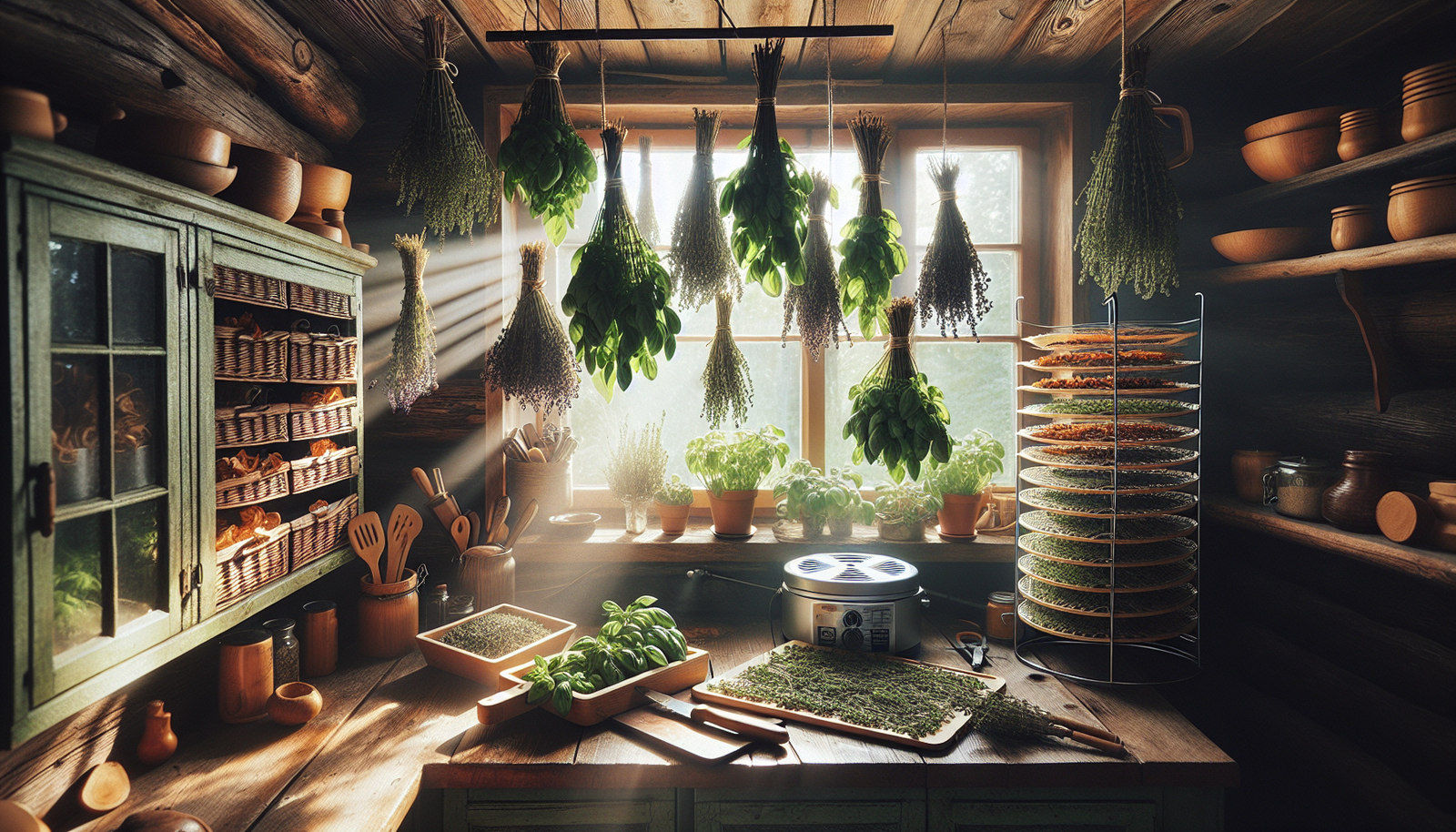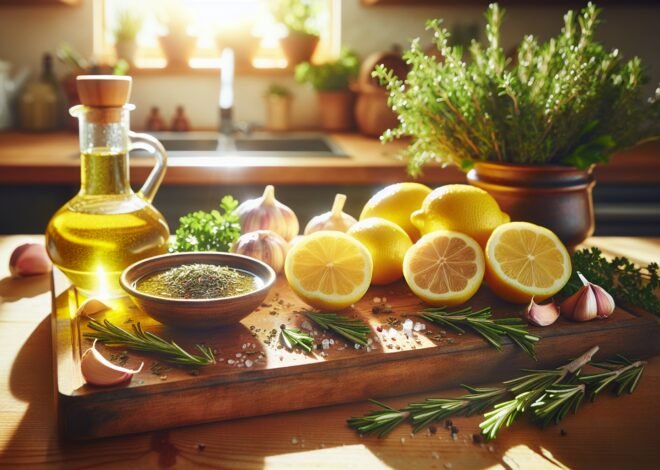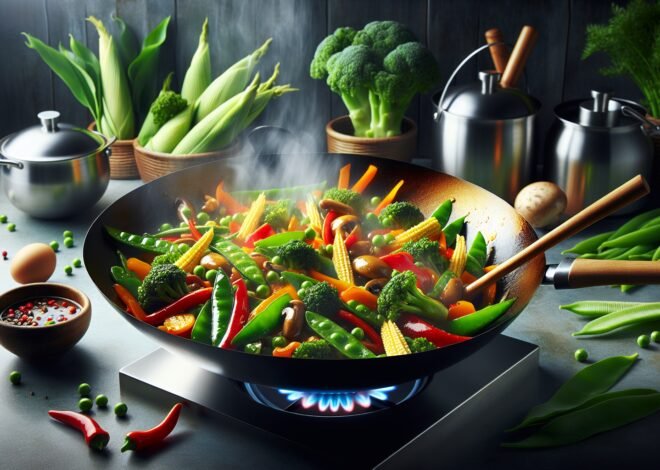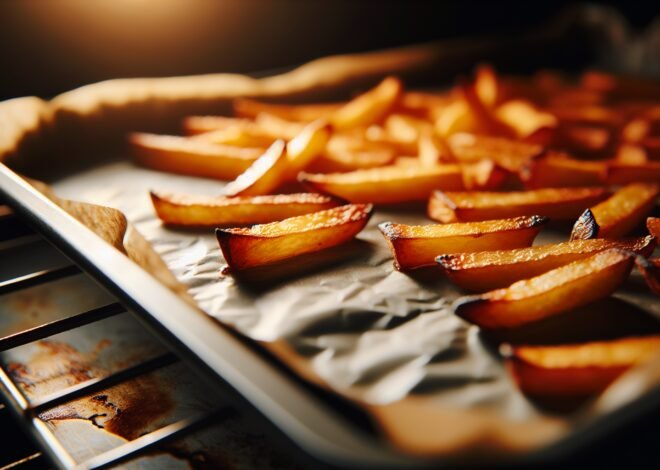
Best Techniques for Drying Fresh Herbs at Home
Dry fresh herbs are an essential component of preserving flavor and extending the shelf life of your garden harvest. Did you know that drying herbs can retain up to 85% of their original flavor? This post will guide you through effective techniques for drying herbs at home, ensuring you capture not just the aroma but also the essence of your herbs. Whether you’re using air drying, using a dehydrator, or trying oven drying, each method has its benefits and challenges. Explore these methods to successfully incorporate dried herbs into your cooking, saving money and reducing waste.
Introduction to Drying Fresh Herbs at Home
Drying fresh herbs at home is an art that blends the joy of gardening with the satisfaction of preserving nature’s bounty. Imagine the aroma of basil, rosemary, and thyme, all captured in jars, waiting to be unleashed in your culinary creations. Not only is it rewarding, but drying herbs also extends their shelf life, ensuring you have access to vibrant flavors year-round. Let’s explore the benefits, types of herbs, and equipment needed to embark on this aromatic journey.
Benefits of Drying Your Own Herbs
Drying herbs at home offers numerous benefits, both practical and sensory. You retain control over the process, ensuring the herbs are free from pesticides and additives. Home-dried herbs often boast a more robust flavor compared to store-bought options. Additionally, drying your own herbs is cost-effective. It reduces waste by using what you grow. There’s also the joy of connecting with nature and the satisfaction of self-sufficiency. Plus, home-dried herbs enhance your culinary repertoire, enabling you to experiment with flavors and aromas.
Common Types of Herbs to Dry
Certain herbs lend themselves beautifully to drying, maintaining their flavor and aroma through the process. Popular choices include:
- Basil: Known for its sweet and spicy notes, basil is a favorite in Mediterranean dishes.
- Rosemary: Its pine-like fragrance makes it a staple in roasted meats and vegetables.
- Thyme: With its earthy flavor, thyme pairs well with soups and stews.
- Oregano: A key ingredient in Italian and Mexican cuisine, oregano’s peppery taste enhances many dishes.
- Mint: Often used in teas and desserts, mint retains its refreshing quality when dried.
These herbs not only maintain their taste but also offer versatility in various recipes.
Basic Equipment Needed for Herb Drying
Embarking on herb drying requires some basic tools to ensure success. Most importantly, a pair of sharp scissors or pruning shears is needed for harvesting stems. String or rubber bands are useful for bundling herbs for air drying. Mesh screens or racks facilitate air circulation, crucial for even drying.
For those preferring quicker methods, a dehydrator is a worthwhile investment. An oven offers an accessible alternative, useful for drying small batches. For storage, airtight containers like jars or resealable bags preserve freshness and aroma. With these tools in hand, you’re ready to start drying herbs at home, savoring their flavors long after the growing season ends.
Methods for Drying Fresh Herbs
Now that you’re equipped with the basics, it’s time to dive into the methods of drying fresh herbs. Each technique has its unique advantages and suits different needs and preferences. Whether you prefer the traditional air drying, the efficiency of a dehydrator, or the convenience of an oven, there is a method to match your lifestyle.
Air Drying Techniques for Herbs
Air drying is a time-honored method, perfect for those who enjoy a hands-off approach. It’s particularly suited for sturdy herbs like rosemary and thyme. Start by gathering small bunches of herbs and securing them with string or rubber bands. Hang them upside down in a warm, dry, and well-ventilated area, away from direct sunlight. You might consider using a paper bag with holes to cover the herbs. This helps protect them from dust and retains essential oils.
Air Drying Steps:
- Harvest: Choose healthy, dry herbs, preferably in the morning after the dew has evaporated.
- Bundle: Group herbs in small bunches and tie them securely.
- Hang: Suspend the bundles in a ventilated space, allowing them to air dry for one to two weeks.
- Check: Ensure herbs are crisp and brittle before storing them.
Air drying requires patience but rewards you with vibrant, naturally preserved herbs.
How to Dry Herbs in a Dehydrator
For those seeking speed and consistency, a dehydrator is an excellent choice. Dehydrators control temperature and airflow, ideal for delicate herbs like basil and mint. Begin by washing the herbs and patting them dry. Spread them in a single layer on the dehydrator trays. Set the dehydrator to the recommended temperature, usually between 95-115°F (35-46°C).
Dehydrator Drying Steps:
- Prepare: Clean and dry the herbs thoroughly.
- Arrange: Place herbs on trays, ensuring they don’t overlap.
- Set: Adjust the dehydrator to the appropriate temperature.
- Monitor: Check periodically for dryness, usually within 2-4 hours.
Dehydrators offer efficiency and precision, delivering aromatic, evenly dried herbs.
Oven Drying Methods for Preserving Herbs
Oven drying is a practical method for those without specialized equipment. It’s faster than air drying and doesn’t require a dehydrator. Begin by preheating the oven to its lowest setting, around 140-170°F (60-75°C). Arrange the herbs on a baking sheet lined with parchment paper. Leave the oven door slightly ajar to allow moisture to escape.
Oven Drying Steps:
- Preheat: Set the oven to the lowest temperature.
- Arrange: Spread herbs evenly on a baking sheet.
- Dry: Place the sheet in the oven, leaving the door ajar.
- Check: Stir occasionally and monitor dryness, usually within 1-3 hours.
Oven drying offers a quick solution for preserving herbs, ready to enhance your meals with farm-fresh flavors.
Tips for Storing and Using Dried Herbs
With your herbs perfectly dried, the next step is storage and utilization. Proper storage ensures herbs retain their potency and flavor. Knowing how to incorporate them into your cooking can elevate your dishes, making every meal a delightful experience. Discover the best practices for storing and creative ways to use your home-dried herbs.
Best Practices for Storing Dried Herbs
Proper storage is key to preserving the quality of dried herbs. Begin by placing the herbs in airtight containers. Glass jars with tight-fitting lids or resealable bags work well. Store them in a cool, dark, and dry place to prevent exposure to light and moisture. Label containers with the herb name and drying date for easy identification.
Storage Tips:
- Avoid Crushing: Keep herbs whole until ready to use to preserve their oils.
- Use Desiccants: Include silica gel packs to absorb moisture.
- Monitor Humidity: Ensure storage areas remain dry and cool.
Following these practices helps maintain the vibrant flavors of your dried herbs, ready to enhance your culinary creations.
Maximizing Flavor: Cooking with Dried Herbs
Dried herbs can transform everyday dishes into gourmet experiences. Their concentrated flavors require a slightly different approach than fresh herbs. As a rule of thumb, use one teaspoon of dried herbs for every tablespoon of fresh. Add dried herbs at the start of cooking to allow their flavors to infuse the dish.
Flavor Tips:
- Blooming: Heat dried herbs in oil or butter to release their aromas.
- Pairing: Match herbs with complementary ingredients, such as rosemary with lamb or basil with tomatoes.
- Experimenting: Try blending different herbs for unique flavor profiles.
Understanding how to maximize the flavor of dried herbs can elevate your meals from ordinary to extraordinary.
Creative Ways to Use Dried Herbs in Recipes
Dried herbs aren’t just for seasoning; they can add depth and complexity to a wide range of recipes. Consider creating your own herb blends, such as Italian seasoning or herbes de Provence. Use them in marinades, dressings, or infuse oils and vinegars. Sprinkling dried herbs on roasted vegetables, meats, or even popcorn can add unexpected flavors.
Creative Uses:
- Herb-Infused Oils: Combine herbs with olive oil for a flavorful drizzle.
- Herb-Infused Vinegars: Steep herbs in vinegar for dressings and marinades.
- Flavored Butter: Mix dried herbs into butter for a savory spread.
With dried herbs, the culinary possibilities are endless, inviting you to explore and experiment with flavors in your kitchen.
Conclusion
Drying fresh herbs is an efficient way to preserve their flavors for future use. It involves removing moisture from the herbs to prevent spoilage. Techniques such as air-drying, oven-drying, and using a dehydrator are common methods employed. Proper storage in airtight containers protects the dried herbs from moisture and light, maintaining their potency. Dried herbs can be used in cooking for a more concentrated flavor profile compared to fresh.
FAQ
How do you properly dry fresh herbs at home?
To dry fresh herbs, wash them thoroughly and pat them dry. Bundle the herbs and hang them upside down in a warm, dark, and well-ventilated area. Alternatively, use a dehydrator set to low heat or an oven on the lowest setting. Ensure they are completely dry to prevent mold.
What are the best methods for storing dried herbs for long-term freshness?
Store dried herbs in airtight containers, away from direct sunlight and heat. Glass jars or vacuum-sealed bags are ideal. Keep them in a cool, dark cupboard to maintain their flavor and potency for longer.
Can dried herbs be used as a substitute for fresh herbs in recipes?
Dried herbs can replace fresh herbs in recipes. Use about one-third of the quantity since dried herbs have a more concentrated flavor. Adjust according to taste and the specific herb used.
What are the benefits of using dried herbs over fresh herbs?
Dried herbs offer longer shelf life and stronger flavor concentrations. They’re convenient, especially when fresh herbs are out of season or unavailable. They also require less storage space and are easy to measure.
How long do dried herbs retain their flavor when stored correctly?
When stored properly, dried herbs can retain their flavor for 1 to 3 years. The potency diminishes over time, so check them periodically and replace if they lack aroma or taste.
What are the common mistakes to avoid when drying fresh herbs?
Avoid drying herbs in humid areas, as this can lead to mold. Don’t overcrowd them when using a dehydrator or oven. Overdrying can diminish their flavor, so monitor the drying process closely to ensure optimal quality.











